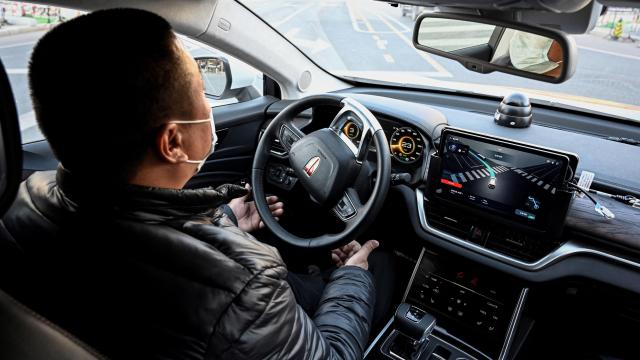As the automotive world continues to trend toward semi-autonomous driver assistance technologies, so have researchers started asking questions about the skills of the drivers behind the wheel. Now, one study published in Scientific Reports suggests that, in a situation where the driver needs to reestablish control over a level-three semi-autonomous vehicle, women may respond more quickly and take over the vehicle more stably than their male counterparts.
The study analysed how well different drivers were able to take over a level-three automated vehicle in situations where a driver would need to reestablish their full attention to the act of driving. As a reminder, level-three autonomy can be described as “conditional automation,” which means that the vehicle can perform most of the tasks of standard driving thanks to technologies that can detect changes in the environment. However, human override is still necessary in certain cases — a driver just doesn’t have to be totally vigilant at all times, since the tech is doing a lot of the work.
In this study, researchers ran 76 drivers (33 women and 43 men) through a driving simulator. In that simulation, drivers were expected to occasionally take control of the vehicle when external factors required it — such as driving in a place “without complete road signage and markings, construction sites, or in rural areas.” Researchers wanted to analyse the impact of gender on this takeover process, citing other studies that have highlighted how gender impacts “crash patterns, risk perception, driving confidence, self-assessment of driving skills, anger while driving, and traffic violations.” It would track, then, that gender may also impact the ability to safely take over a vehicle.
As you’re probably imagining, women tended to rank slightly higher than their male peers here:
We found marked gender differences in terms of the performance of taking over control in L3 AVs. In general, women exhibited better takeover performance than men. Compared to the male participants, a smaller percentage hasty takeovers were recorded among female participants, although the difference is not statistically significant. In addition, female drivers exhibited significantly faster reactions to the takeover request initiated by the L3 AV system and significantly more stable operation of the steering wheel during the process of taking over control compared to male participants.
In sum: women took over the cars faster and more smoothly than men, though neither party could exactly be termed “bad” at the autonomous takeover.
The study also comes to a few other interesting conclusions:
- Women are more likely to be sceptical of autonomous technology, even though they’re slightly better at using it than men.
- Women tend to rank their driving skills less confidently than men, which could impact takeover time.
- Both men and women struggled to enact a takeover in snowy or foggy weather conditions, which suggests a need for improved autonomous tech during those instances.
Of course, the study also notes its limitations. The test took place on a simulator, so some of the natural driving inclinations were lost. Researchers also noted that men and women often engage in different distracted activities while behind the wheel in the real world that were not simulated (i.e. women applying makeup while driving), so real-world findings could be different. Finally, there’s the sample size; it’s hard to make sweeping judgements about an entire gender’s driving behaviour based on 76 British drivers.
But the purpose of the study was largely to establish a base of research where one didn’t exist before, allowing future researchers to mimic or alter the experiment. Whether or not the, say, American or Chinese driver base will have similar results would remain to be seen.
The full report is available for free on Scientific Reports if you want to dig in to see the exact terms of the experiment as well as some handy charts outlining the results.
